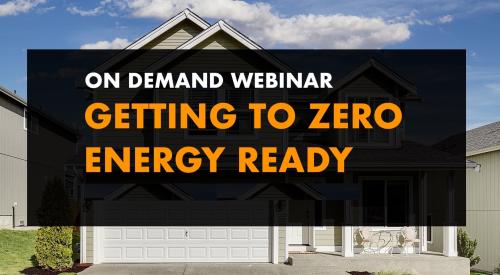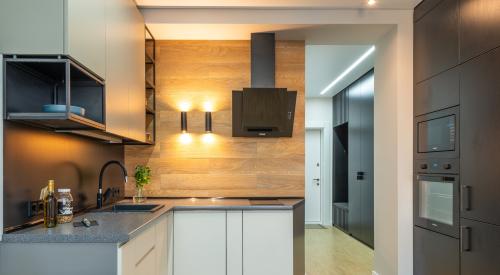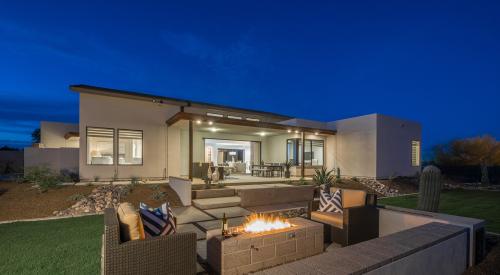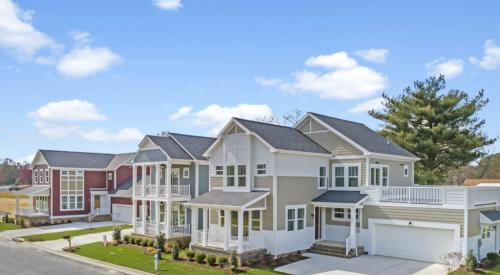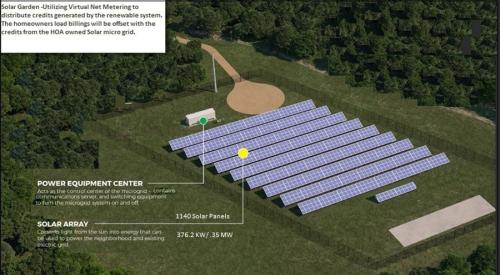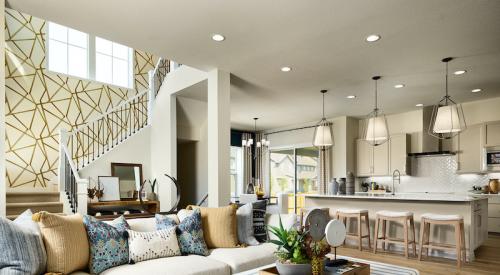When homebuyers look outside at the Denver sky, peering through air that has topped the list as most polluted in the world, they realize the importance of sustainable energy usage more than ever before.
“Obviously we're not going to solve [the global climate crisis] alone,” said Bill Rectanus, vice president of homebuilding operations at Thrive Home Builders. “But we can make sure what we're doing and what we're putting out into the market is doing its part.”
Those who build zero energy ready homes not only show their concern for the environment and future of the planet, but also differentiate themselves from bigger builders around them.
Last November, Utopia editors discussed these issues and more during the Getting To Zero Energy Ready In Homebuilding webinar, featuring Jay Epstein, president and founder of Healthy Communities; Bill Rectanus of Thrive Home Builders; and Chad Gillespie, senior manager of performance construction at Mitsubishi Electric Trane HVAC. David Barista, Utopia’s content director, moderated the discussion.
ZERO ENERGY READY: BEST PRACTICES
Influenced by the Department of Energy’s Zero Energy Ready Home (ZERH) program, the webinar discussion included focuses that builders can key in on in order to achieve a net-zero home build. Here are some of their tips and takeaways.
1. Focus on decarbonization and indoor air quality.
Some key requirements by the ZERH program include paying attention to the quality of air in the home. This means reducing asthma triggers, having moisture and HVAC humidity controls, using radon-resistant construction methods, and making sure that low-emitting materials are implemented for things like paint, carpet, and hardwood floors.
Additionally, steps should be taken to reduce the 17,000 pounds of carbon emissions that are released from a typical home every year. One project spearheaded by Epstein—the Solara Woods microgrid community—involves cutting emissions to less than 2,000 pounds per year through the unique use of solar panel installations.
2. Focus on renewable energy, especially solar.
One acre of forest absorbs six tons of carbon dioxide, and puts out four tons of oxygen; this is enough to meet the annual needs of 18 people. At Solara Woods, they build solar panels within the trees, preserving the beauty and use of nature. The panels are maintained regularly and operate better as they’re cleaned, removing dust. These solar panels have cooler air flowing behind them than if they were installed on rooftops—increasing operating efficiency by 6% to 8%.
Epstein believes this is where the future of solar panels is headed. For current single-home builds, however, Rectanus suggests pre-designing the roof space for future implementation of solar panels. This includes building conduits, panels, and breakers in the appropriate locations.
Additionally, Rectanus believes builders should focus on energy conservation in the home first, then move to energy production second. He suggests building partnerships with skilled building science professionals and energy raters. They should guide you by not only looking at dollars, but performance as well.
3. Focus on efficient water heating/cooling systems.
“We’re all connected through water,” says Epstein, after connecting with Darrel McMaster, an Austin-based home builder. Besides solar and wind, what we're saving in our energy affects our savings in our water, whether it's nuclear, gas, coal, diesel, or hydroelectric.
The DOE program focuses heavily on how water is distributed throughout the home. Requirements for this include a system that delivers no more than 0.6 gallons of water before hot water arrives at the fixture, and—as Rectanus suggests—a water recirculation system that is demand controlled, or at least has adaptive learning capability so it runs only at appropriate times.
The takeaway here is that small changes to the structure of plumbing layout can lead to significant water savings for the home buyer.
4. Focus on smart design choices to offset the extra expenses of energy features.
Lastly, Rectanus admits that it will of course cost more to build a better house. However, smart design decisions can help offset the requirements for building a zero energy ready home.
Builders can use simple exterior cladding material that is effective, yet still emits beauty. They might reduce the amount of corners in the home to cut costs as well.
As for products, builders could implement a variable speed compressor for heating and cooling the home. This would allow the temperature to stay consistent, with minimal fluctuation providing energy efficiency.
The full webinar can be watched on demand, including specific recommendations for the DOE ZERH program, descriptive statistics and numbers for builders to use, and product recommendations from Mitsubishi.
For those who want to download a PDF with all 48 slides, click the button below.



